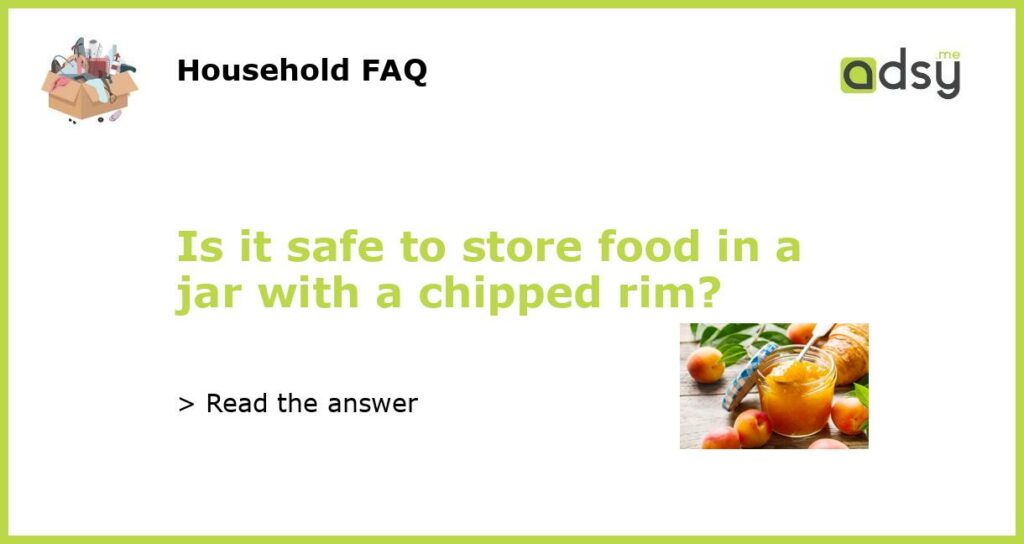Introduction
Storing food properly is essential for maintaining its safety and quality. One common method is to use glass jars, as they are durable, easy to clean, and provide an airtight seal. However, what happens when a jar has a chipped rim? Is it still safe to use for storing food? In this article, we will explore this question and provide you with an informed answer.
The potential risks
When a glass jar has a chipped rim, it can pose several risks when it comes to storing food. One of the main concerns is the possibility of physical injury. The sharp edges of the chip can cause cuts or abrasions if not handled carefully. Additionally, the chip can increase the likelihood of the jar breaking, which could lead to shattered glass and potential injuries.
Contamination and spoilage
Aside from the physical risks, chipped rims can also affect the safety and quality of the food stored in the jar. The chipped area can create small cracks or openings in the glass, allowing bacteria, mold, and other contaminants to enter. These contaminants can lead to spoilage, contamination, and potential foodborne illnesses if consumed.
Furthermore, the chipped rim may compromise the jar’s ability to provide an airtight seal. This can result in exposure to oxygen, moisture, and other external factors that can accelerate food spoilage. The compromised seal can also allow odors from the surrounding environment to enter the jar and affect the flavor and aroma of the stored food.
Evaluating the risks
When determining whether it is safe to store food in a jar with a chipped rim, it is important to consider the extent and location of the chip. If the chip is small and located on the exterior of the rim, with no shards or sharp edges protruding into the jar, the risks may be minimal. However, it is crucial to carefully examine the chip and assess its potential impact on the integrity of the jar and the safety of the food.
If the chip is larger or located on the interior of the rim, it is best to err on the side of caution and avoid using the jar for food storage. Even if the chip appears small, it is worth noting that glass can be unpredictable, and small chips can quickly turn into larger cracks or breaks when exposed to temperature changes or pressure.
The importance of proper storage containers
While it may be tempting to try and salvage a chipped jar for storage purposes, it is generally recommended to use containers that are in good condition. Investing in high-quality glass jars with intact rims can help ensure the safety and longevity of your stored food. Always inspect jars regularly for any signs of damage, including chips, cracks, or weakening in the glass.
If you do come across a chipped jar, it can still be repurposed for non-food storage purposes. Be sure to clean and sanitize it thoroughly before using it to store non-edible items.






